1366
Видео / Морские "зацеперы"
« : 30.04.2019, 22:53:23 »Настоятельно НЕ РЕКОМЕНДУЕМ повторять в домашних условиях!
|
Для создания НОВОГО ПОСТА, необходимо выбрать нужный раздел ФОРУМА и создать в нем НОВУЮ ТЕМУ. Если вы новый пользователь, то вам нужно ЗАРЕГИСТРИРОВАТЬСЯ на форуме В этом разделе можно просмотреть все сообщения, сделанные этим пользователем. 1366
Видео / Морские "зацеперы"« : 30.04.2019, 22:53:23 »Настоятельно НЕ РЕКОМЕНДУЕМ повторять в домашних условиях! 1367
История / Героический бриг «Меркурий» будет воссоздан« : 30.04.2019, 10:33:21 »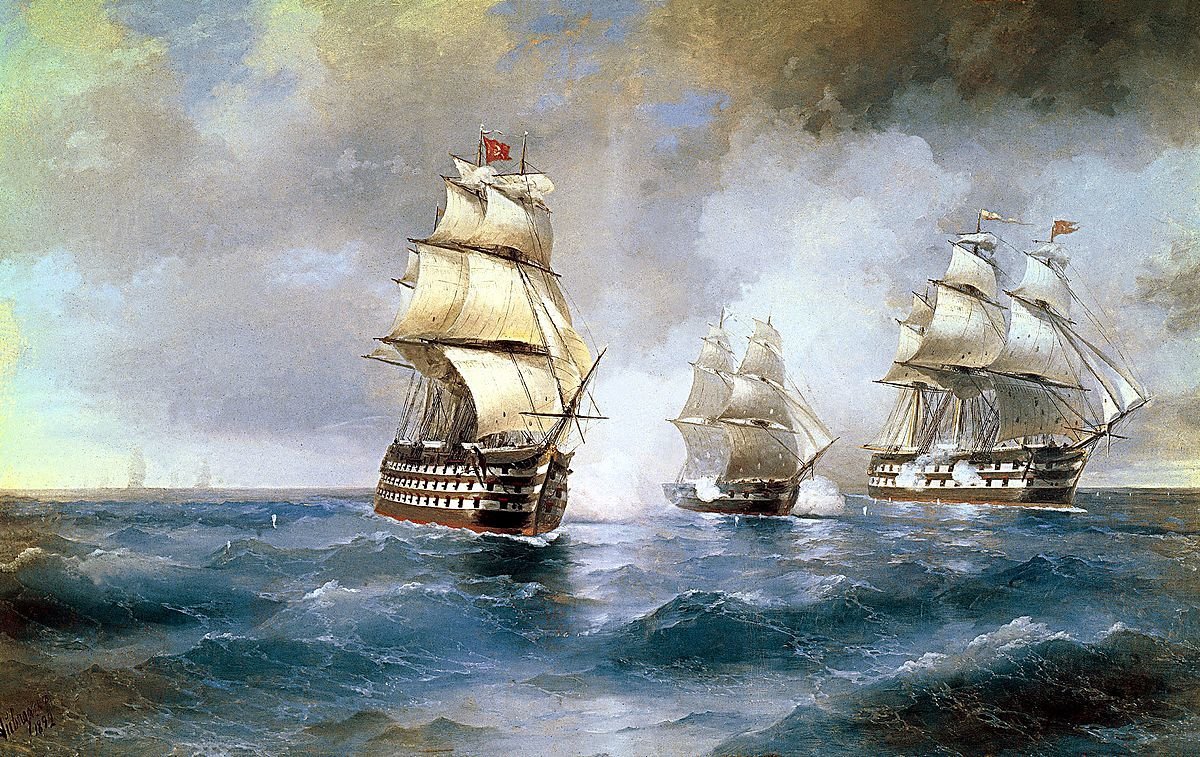 Президент России Владимир Путин после мартовской встречи с представителями общественности Крыма распорядился продумать, как воссоздать несколько памятников на полуострове. Об этом говорится в перечне поручений главы государства, опубликованном на сайте Кремля в прошлый четверг. Так, премьер-министру Дмитрию Медведеву и министру обороны Сергею Шойгу до 1 июня следует представить предложения по «воссозданию в учебно-научных целях брига «Меркурий», заложенного в 1819 году». Парусный бриг «Меркурий» с 18 пушками участвовал в русско-турецкой войне 1828-1829 годов. В мае 1829 года ему пришлось принять в Черном море неравный бой с двумя турецкими линейными кораблями, имевшими 74 и 110 пушек. За счет умелого маневрирования бриг смог избежать серьезных повреждений и повредить ответным огнем рангоут и такелаж обоих противников, что позволило ему уйти от погони. За этот подвиг корабль получил Георгиевский флаг, его командир — капитан Александр Казарский — был награжден орденом Святого Георгия. Анна Новикова 1368
Образ жизни / Мечта трех« : 30.04.2019, 10:10:16 »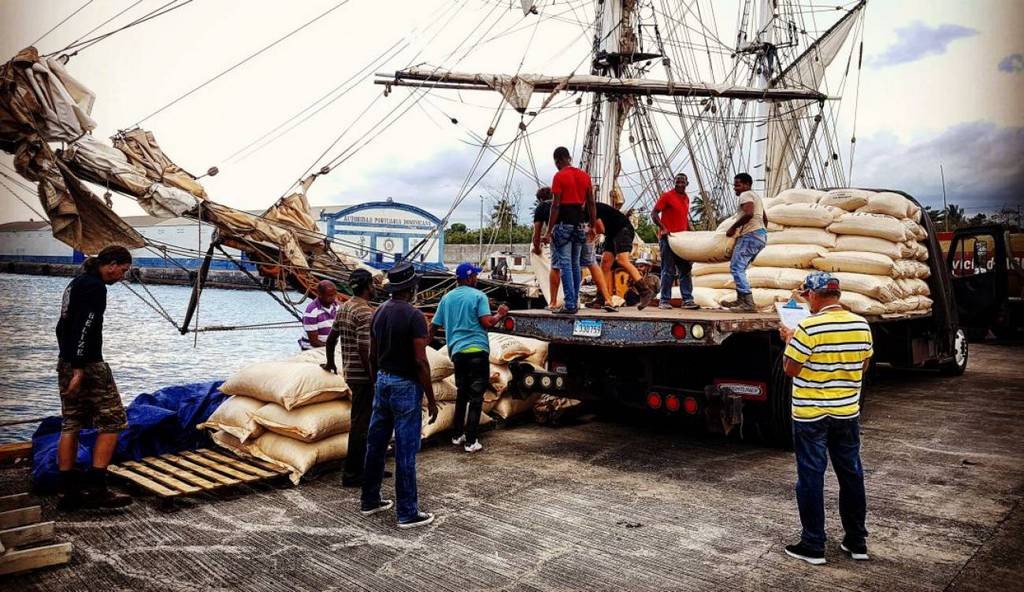 Чего только не найдешь на просторах интернета! Вот вам, к примеру, такая история Однажды три друга голландца – Арьен, Андреас и Йорне – отправились туристами в плавание на барке Europa. И, представьте, пары недель, проведенных на борту знаменитого парусника, оказалось достаточно для того, чтобы у всех троих – по отдельности и вместе – возникла мечта. Учредить грузовую парусную компанию. Первую в мире. 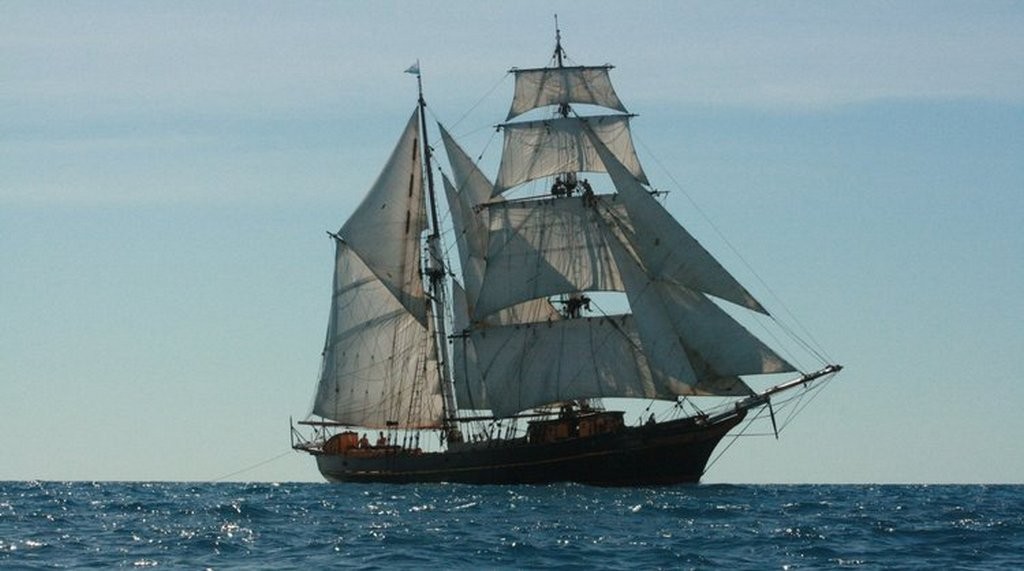 И создали – в 2007 году. Называется компания трех друзей – Tres Hombrеs Shipping или Fairetransport. Владеет она двумя судами. 32-метровая шхуна Tres Hombrеs грузоподъемностью 45 тонн ходит через Атлантику, а ее «младшая сестра» Nordlys (25 тонн) вдоль европейских берегов. Перевозят зерна кофе и какао, вино, оливковое масло. 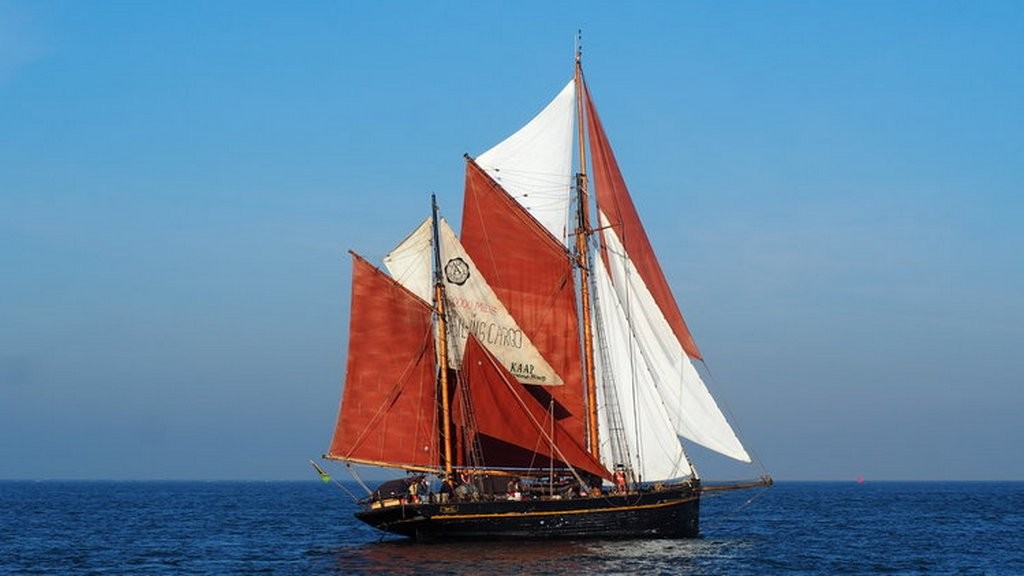 Друзья счастливы. Дело, которому они посвятили свою жизнь, не самое денежное, зато, по их собственным словам, самое счастливое. Потому что вреда природе они не приносят. Чего и другим желают. 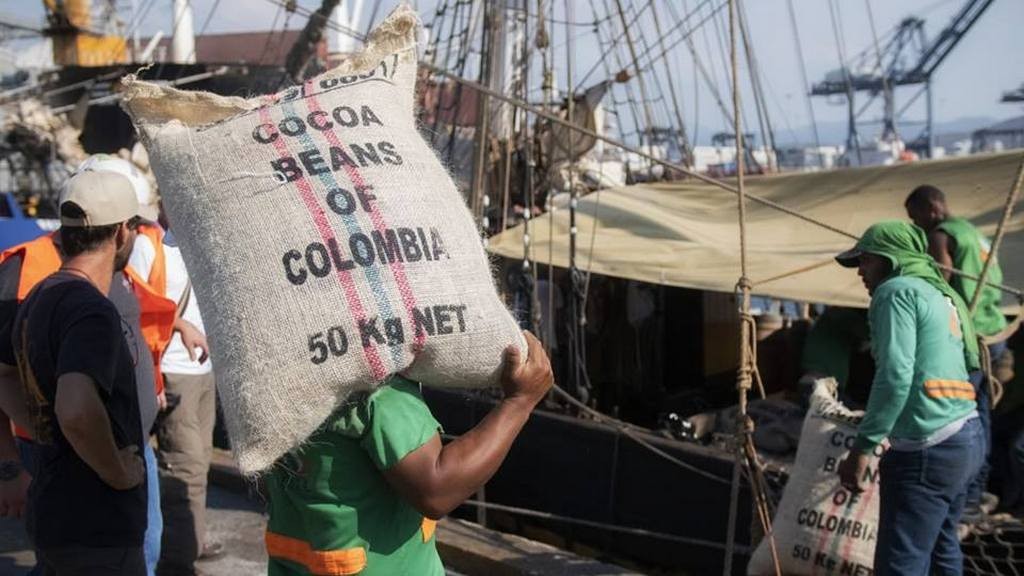 И, кстати, на Tres Hombrеs и Nordlys всегда отводят место для курсантов-практикантов. Пусть счастливых людей на планете становится больше. Источник 1369
Машинный телеграф / Чилийские военные засняли лодку Федора Конюхова в Южном океане« : 30.04.2019, 09:55:43 »Российский путешественник Федор Конюхов, совершающий на весельной лодке «АКРОС» в рамках одиночного кругосветного плавания переход из Новой Зеландии к мысу Горн, впервые за 141 день увидел людей. По подсчетам экспедиционного штаба, за все время со старта в Новой Зеландии в декабре 2018 года тем же курсом, что и «АКРОС», двигалось всего десять судов, да и те проходили в 200–400 морских милях от россиянина. Гостем стал поисково-спасательный самолет Морской авиации Чили (Armada de Chile) Embraer 111, который специально вылетел на патрулирование района Южного океана, в котором сейчас находится Конюхов. ПИЛОТЫ НЕ ТОЛЬКО ПОГОВОРИЛИ С ПУТЕШЕСТВЕННИКОМ, НО И СНЯЛИ ЛОДКУ НА ВИДЕО, КОТОРОЕ ЗАТЕМ ОПУБЛИКОВАЛИ НА СТРАНИЦЕ МОРСКОЙ АВИАЦИИ В TWITTER. Военные заранее предупредили экспедиционный штаб о планируемом полете, так что россиянин был готов к их появлению. Конюхову передали указания зажечь фальшфейер, когда он услышит самолет, и настроить рацию на определенный канал. Помогла и электроника — звуковое оповещение на эхоответчике на «АКРОС» сработало еще до того, как самолет и лодка оказались в зоне видимости друг друга. «Самолет все это время делал круги вокруг лодки, удаляясь и возвращаясь, — скорость большая, но вертолёт сюда не долетит, до мыса Горн — 460 морских миль (828 километров). В завершении самолет помахал крылом, и пилоты пожелали мне "safe trip" на пути к мысу Горн. Спасибо Armada de Chile за такой визит. Это первые люди, которых я увидел с момента старта от берегов Новой Зеландии. 141 день я не видел ни кораблей, ни самолетов. Пилоты — профессионалы, в такую погоду и так далеко смогли вылетать в Южный океан. Огромное уважение вызывает такая работа!» — рассказал позже Конюхов. Погода в районе действительно сложная. Из-за низкой облачности самолет не с первого раза заметил «АКРОС». «Дожди не прекращаются. Моросящий дождь переходит в проливной, потом опять моросит. Сложно обнаружить границу между океаном и небом, все — сплошная мокрота, как будто мокрое одеяло. Буквально через пару часов ветер усилится до штормового и зайдет на южный, будет дуть из Антарктиды», — рассказал в воскресенье Конюхов НЕСМОТРЯ НА ХОЛОД, ПУТЕШЕСТВЕННИК НЕ МОЖЕТ СЕБЕ ПОЗВОЛИТЬ ПОЛНОЦЕННЫЙ ОБОГРЕВ КАЮТЫ. После того, как во время шторма 1 апреля его лодка трижды перевернулась и с нее сорвало часть солнечных панелей, мощности оставшихся едва хватает на то, чтобы поддерживать работу навигационных приборов. От светильников Конюхову тоже пришлось отказаться в пользу налобного фонарика на батарейках. «Аккумуляторы стоят на дне лодки, вода в океане холодная. Обидно, что в аккумуляторном отсеке установлена специальная система подогрева аккумуляторных отсеков: металлическая пластина с нагревательными элементами по типу теплого пола. Расчет был на то, что теплая пластина служит прослойкой, подогревает аккумуляторы и повышает их КПД, но я не могу ее использовать. Как только включаю, заряд аккумуляторов тут же падает. Инженеры из компании Rannoch Adventure Майк Вуд и Гари Скрогс потратили много времени, разработали эту систему, а я не могу ей воспользоваться сейчас, когда она очень нужна», — сетует Конюхов. Штаб путешественника тем временем уже перебрался Аргентину. 26 апреля Оскар Конюхов, Аркадий Конюхов (внук Федора Конюхова) и опытные яхтсмены-путешественники Семен Деяк, Петр Исаченко, Михаил Тарасов и Павел Богачев были приглашены на прием к российскому послу в Буэнос-Айресе. А в воскресенье вечером, 28 апреля, команда прилетела в Ушуаю. ВСТРЕЧАТЬ ФЕДОРА КОНЮХОВА ИЗ ПОРТА ВЫЙДУТ ТРИ ЯХТЫ: К ДВУМ БОРТАМ ЭКСПЕДИЦИОННОГО ШТАБА НА МОСКОВСКОЙ ЯХТЕ LADY MARY ПРИСОЕДИНИТСЯ СЕМЬЯ КЛОЧКОВЫХ, КОТОРАЯ ТОЖЕ ПУТЕШЕСТВУЕТ ВОКРУГ СВЕТА. Впрочем, еще до этой радостной встречи одиночество Федора Конюхова в океане, вероятно, закончится. Рядом с побережьем Южной Америки на границе шельфа он может столкнуться с рыбацкими судами. Хотя эти встречи, скорее всего, заставят его больше насторожиться, чем обрадоваться: возвышающийся над водой на 300 метров танкер, если смотреть на него с весельной лодки на поверхности воды, закрывает и ветер, и волну, и даже солнце. Анастасия Носова 1370
Видео / «МАТЧ! СТРАНА». Программа «Парусный спорт». Выпуск 11« : 28.04.2019, 10:39:17 »Смотрим очередной выпуск авторской программы Алексея Жирова «Парусный спорт» (выходит на канале «МАТЧ! Страна»). В выпуске: старт сезона в Национальной парусной Лиге, итоги чемпионата мира в классе Melges 20, итоги Байкальской буерной недели, азартные гонки на международной OptiOrange Valencia 2019 в классе «Оптимист», а также новые рубрики и самые важные мартовские новости с участием российских спортсменов. Конкурс на лучшее любительское видео продолжается. Присылайте свои работы на адрес Jirovam@gmail.com. По итогам года будет вручен приз! 1371
Your topic / Joystick Boat Handling Shootout« : 28.04.2019, 10:25:53 »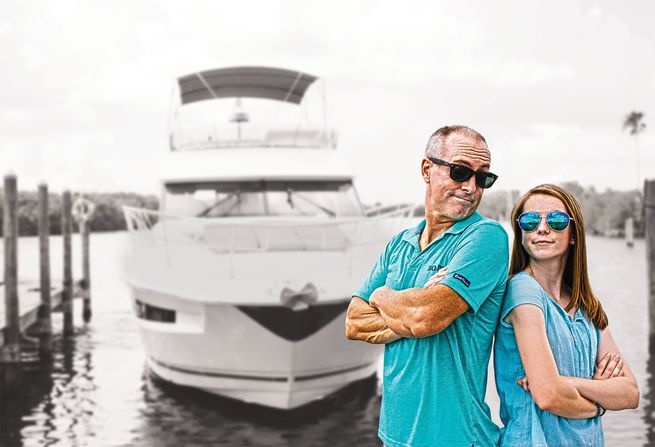 Can a kid with a joystick beat a pro with experience? A father and daughter compete against each other in a joystick docking competition. Who wins? Barely 13 years old and just weeks removed from earning her boating-safety certificate, she’s taken control of a twin-engine 46-foot Prestige with the carefree attitude of a kid who actually thinks docking a near-$1 million boat is child’s play. Of course, in this case, it is. Kind of. For the kid, docking this beauty hasn’t required hours of learning to work twin engines by finessing the sticks (throttle and shift levers). Heck, in the few minutes she’s been aboard, she hasn’t even touched them. All she’s required is about 10 minutes of instruction and that singular control unit all too familiar to many a teen — the joystick. Still, docking a boat is no video game, and I’m about to prove it. Welcome to Boating’s Joystick Challenge, a head-to-head matchup of seasoned skipper versus rank novice. The contestants? The kid, aka Riley Hemmel, a pint-size powerhouse who grew up around boats but has never actually captained anything bigger than an 18-foot runabout. And me, her dad, a guy who has worked for this magazine testing boats for nearly 25 years but, truth be told, typically specializes in boats half this size and with a single outboard or sterndrive on the transom. Oh, I should still win. Extensive twin-engine experience or not, I’ve docked plenty of boats, and I’ve got the obvious edge when it comes to judging wind and current. Plus, I’m a cool, level-headed adult. The kid? She’s a teenager, an irrational life form subject to impulsive action and wild mood swings. (Wait, this might be one of my stories she actually reads. Let’s make that “a life form who, while certainly delightful, lacks the judgment and patience required to carry out such a difficult task.”) Still, I’m not taking any chances. As she settles into the helm for our first challenge, I wish her luck — then subtly shift the Bimini so that the full-fledged assault of Florida’s brutal August sun finds its way onto her face. Hey kid, I love you, but if you can’t take the heat, get off the flybridge. Daddy’s not playin’. 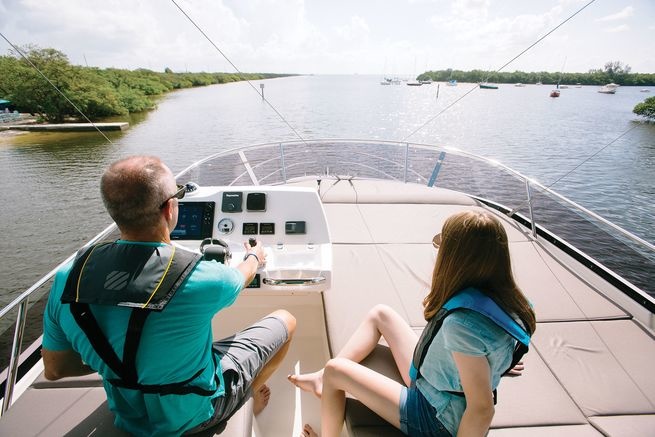 Joysticks can take some of the stress out of docking from a flying bridge Control Freaks Though this may be the kid’s first exposure to joystick control, the system in question — Volvo Penta’s Inboard Performance System (IPS) — has actually been around since 2005, the year the engine manufacturer first introduced pod-based drives with forward-facing, twin contra-rotating props. Testing quickly proved the marketing hype was well-deserved. Because pods sat directly below the engines, boatbuilders regained valuable real estate on board. Noise and vibration were also reduced, while efficiency increased as much as 35 percent at higher speeds, thanks in part to the props operating in undisturbed water. Lower horsepower engines were also able to do the work of the higher horsepower engine alternatives. One of the greatest practical advantages of IPS, however, is in terms of low-speed, close-quarters handling. With the pods able to move independently of one another through a roughly 30-degree arc and effectively provide thrust in almost any direction, Volvo Penta is able to offer outstanding maneuverability. With IPS, the captain can direct the joystick in the direction he wants the boat to move, and the IPS drives (and some cleverly written software) do the rest. Boats can spin within their own length, pivot to any heading, and even move directly sideways into an open slot at a crowded dock. In short, handling a large, multiengine boat is, dare I say it, almost simple. 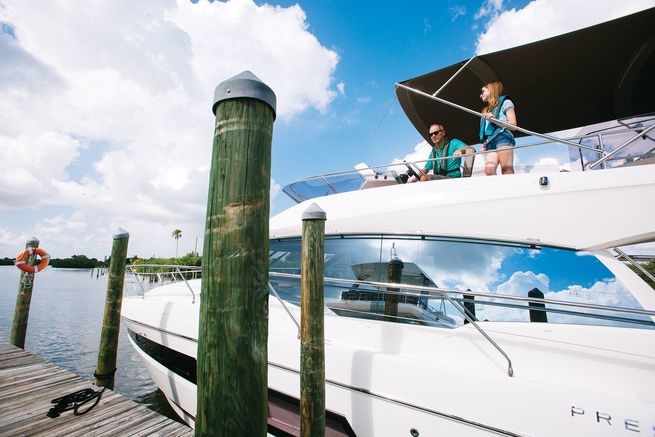 Volvo’s joystick system allows for more intuitive docking; with a little practice, most people can master it fairly quickly As you might expect, the kid took to it immediately. Full disclosure? Unless you count the occasional Wii session, she hasn’t grown up with video games (not sure how we achieved that miracle). But the ridiculously short learning curve and intuitive way in which input at the joystick moves the boat through the water was tailor-made for the novice boater. Within minutes, our instructor, Alex Kramer from St. Petersburg’s Galati Yacht Sales, had her moving the boat through a narrow channel, spinning a 180 for the return trip, slipping the hull sideways through the water, and backing down like a seasoned pro. Yes, I got the same crash course (don’t tell the kid, but I actually have some previous experience with joystick systems), but I knew I was in for a battle almost from the start. Like I said, she’s good — and despite my best efforts with that Bimini, for some reason still not sweating. She has icewater in her veins.  We agreed upon a target, a sign posted on one of the dock pilings, to judge our results. Slide over so that the sign was opposite the helm and you won. Miss it and you lose Let the Games Begin Our first challenge, navigating the no-wake channel off the Galati docks, was simple. Pushing the joystick forward propelled us through the water; pushing it farther increased our speed. When we wanted to slow down and stop, we simply let the stick return to the neutral position before pulling it back to give a little bump in reverse and cease our momentum. Spinning the boat through a 180-degree turn was also pretty much a draw. A simple twist of the joystick resulted in the boat spinning within its own length. We both also steered the boat through a turn with a combination of forward push and subtle twist before doing likewise in reverse. Each time, the IPS pods adjusted their thrust and direction to transfer our input into intuitive movement. We both even held the boat in position despite wind and current using Volvo Penta’s Dynamic Positioning System (DPS). We simply pushed a button. The pod drives and linked GPS did the rest, keeping us within feet of our mark. Open water, however, was tailor-made for the kid. The scenarios ahead would put us in close proximity to Galati’s floating concrete docks. I nonchalantly asked Kramer the price of the Prestige, then made a few subtle comments about the sickening sound of crunching fiberglass before finally turning over the helm.  Smoothness comes from keeping your fingers on the joystick and making subtle motions The next challenge, slipping the boat directly sideways to pull up to a parallel dock, would require a little more finesse — and coolness under pressure. We agreed upon a target, a sign posted on one of the dock pilings, to judge our results. Slide over so that the sign was opposite the helm and you won. Miss it and you lose, not to mention crunch the theoretical mega-yachts waiting fore and aft. Long story short, we both pulled it off, coming to rest inches off the dock. Again, IPS made it simple. Pushing the joystick sideways toward the dock slid the boat in the intended direction. Pushing the stick farther increased the power and thus the rate of travel. When the wind kicked the bow at an angle, a gentle rotation of the joystick brought the boat back to parallel. Moving ahead of or behind our mark was quickly corrected with gentle pressure on the stick forward or back. Kramer’s best advice? Keep your fingers on the joystick and make subtle motions rather than make a movement and release. The kid got the hang of that idea better, and her smoothness was notable. She nudged the joystick over to slide the boat sideways, released the tension to let the drift settle, then bumped it again until she had the boat in perfect position. I, on the other hand, was a little more heavy-handed. I pushed the stick harder, powering the boat more rapidly toward the dock, then occasionally had to correct with thrust in the opposite direction to slow my approach. I may have occasionally fared better against the clock, but in terms of precision, she was winning the war, even when we repositioned and approached the dock to the starboard-side, negating the sight advantage that came with the Prestige’s portside helm. Long story short, the kid has pretty good depth perception. And increasingly, a rather smug smile. Time to up the ante. 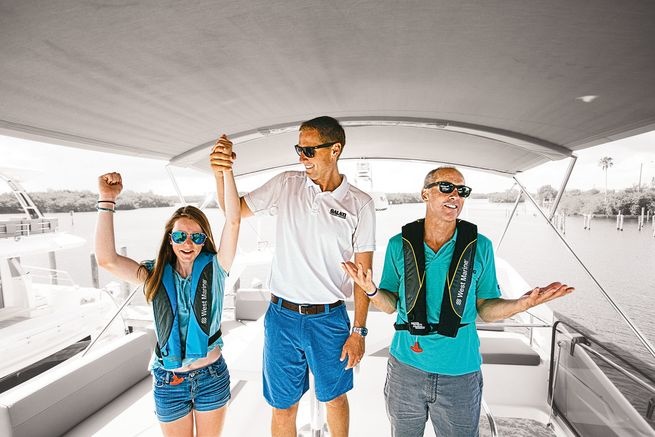 A 13-year-old kid slipped a nearly $1 million boat into a claustrophobic slip without even breaking a sweat Don’t Call It a Comeback I’ll admit the final challenge — backing into a slip — is the one where I thought I would, well, smoke the little punk. With ease. My confidence grew once I saw the setup. We wouldn’t be simply backing the 46-foot Prestige into a slip, we’d first be pivoting it around a 45-degree corner in reverse before backing into a narrow slip with an unforgiving dock to port and intimidating pilings to starboard. My cockiness would have grown unchecked save for one thing — I was semiconvinced the kid, my kid, was about to tear up some very pricey fiberglass. And let’s just say my checkbook isn’t quite up to that challenge. As the more experienced captain, I went first, trying to remember my rule about never approaching a dock faster than you’re willing to hit it. I gauged how far to reverse before beginning my turn into the slip, pivoted the boat deftly around the intimidating corner of the slip, and then began backing down toward the seawall. My momentum, however, pushed me a little close to the piling, and I responded with one of my classic bursts of power. I recovered quickly, but as some guy named Newton once said, for every action there is an equal and opposite reaction, and I once again found myself correcting my heavy hand with another subtle correction. To the crowd on the dock, it was probably little more than a blip in my performance, but like a kid taking their first driving test, I could feel the judge in the next seat deducting points off my performance. I had just left the door to victory open — and that darn kid was chomping at the bit to walk triumphantly through. I tried my best to distract. I commented on the oppressive heat, asked about the boys at school, even went all-out Caddyshack on her (“M-m-m, miss it Noonan! Miss!”), but alas, it wasn’t meant to be. A 13-year-old kid slipped a nearly $1 million boat into a claustrophobic slip without even breaking a sweat. I was bitterly defeated and yet simultaneously proud. My kid just did that. And if she can do it, so can you — even if you are an old salt with a fondness for the sticks. By Jeff Hemmel 1372
Мероприятия: Что? Где? Когда? / Программа майских праздников в СпортФлоте« : 28.04.2019, 10:11:54 »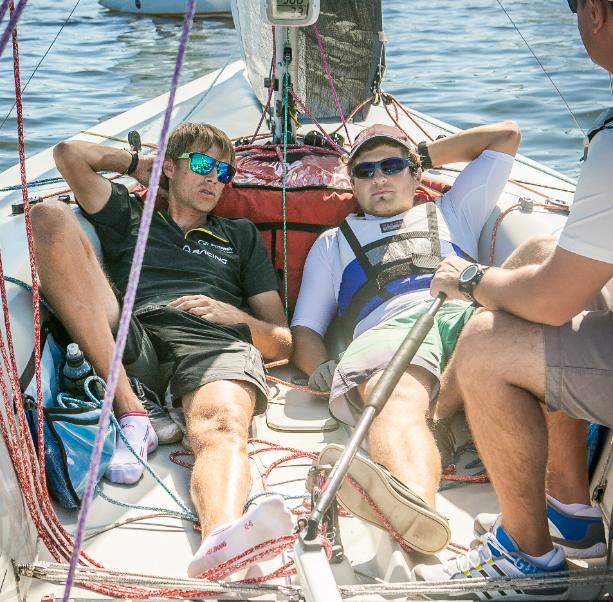 1-12 МАЯ, 8 ДН. ПРАКТИКУМ ДЛЯ РУЛЕВЫХ С 1 мая стартует 8-и дневный интенсив Школы рулевых. Каждый праздничный день с 10.00 до 13.00 упражнения на воде под руководством инструктора на яхтах SB20: как сидеть на яхте, как делать повороты, как швартоваться, как ловить MOB. Курс для тех кто прошел теорию рулевых или хочет научиться рулить яхтой с нуля. Возможно посещение отдельных занятий для подготовленных по интересующим Вас теме (3500руб). Запись booking@sportflot.ru. Темы занятий 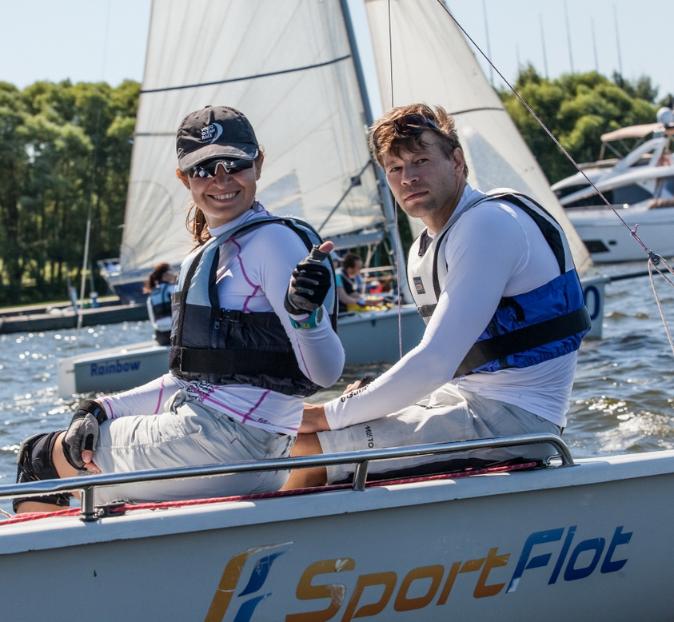 1 МАЯ 13.00 КУРС ДЛЯ НАЧИНАЮЩИХ ГОНЩИКОВ Лето знаменуется началом нашего 4-х дневного специального курса теории и практики в клубе "Матрос спортивной яхты". 4 часа каждый день сделают из вас полезного члена экипажа умеющего работать со шкотами и парусами, освоившего геннакер и основы парусных гонок. Программа для новичков и тех кто хочет начать гоняться на спортивной яхте. Бонус: участие в тренировочных гонках в составе флота. 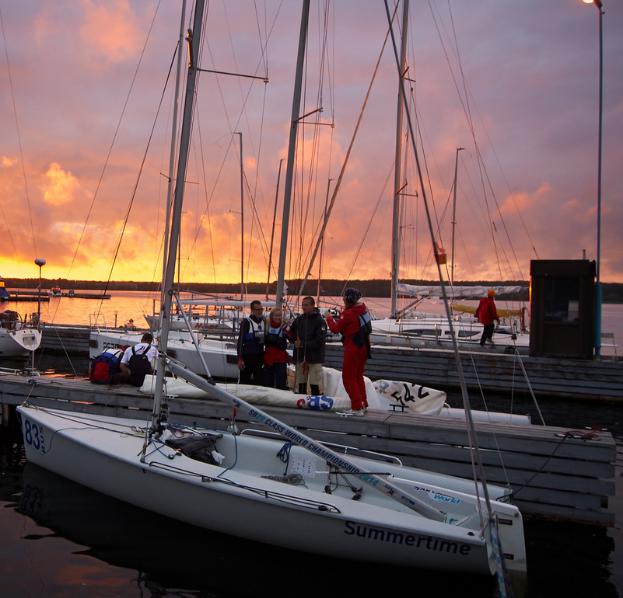 4 МАЯ 14.00 ОТКРЫТИЕ АЗБУЧНЫХ ГОНОК Открываем сезон закатов на Азбучных гонках! Тренировочные гонки нон стоп на спортивных яхтах SB20 с инструктором на борту. За рулем Вы сами, за парусами- вы сами, инструктор - направляет и руководит. Опыт требуется! Медали и торт победителям первого заезда в сезоне! Специальное предложение для экипажей 7500 за лодку! 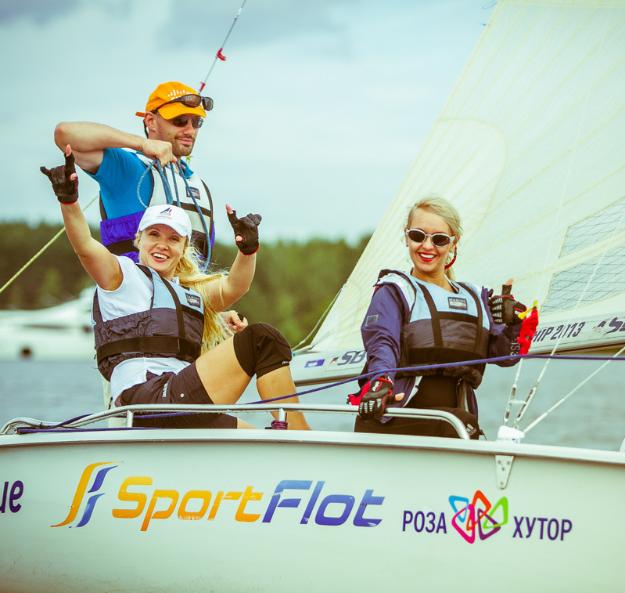 5 МАЯ 12.00 ОТКРЫТИЕ START UP! Погружение в яхтинг для новичков! Как провести праздники с толком?! Прийти к нам на Пирогово. Вводный брифинг о том как устроены яхты, тренировка на яхте с инструктором на борту и вишенка - настоящие гонки под парусами! Опыт не требуется! Приходите по одному или компаниями! Специальное предложение по цене для компании из 3 человек! 1373
Кино / Создатели реплики «Полтавы» сняли фильм о строительстве корабля« : 11.04.2019, 12:27:08 »Верфь исторического судостроения «Полтава» опубликовала в социальных сетях часть документального фильма, посвященного строительству в Санкт-Петербурге реплики первого крупного корабля Балтийского флота — 54-пушечного линейного корабля 4-го ранга «Полтава» (1712). «Уникальным опытом реконструкции исторического парусника нужно делиться, так что мы поставили перед собой задачу наглядно показать, как велось строительство корабля от закладки киля. Самые важные этапы строительства, интервью с мастерами, рассказы об истории и уникальных технологиях — смотрите в документальном фильме "Полтава"», — рассказывают на верфи. Фильм разделили на четыре серии. Хронометраж первой — 24 минуты. Она посвящена эпохе, в которую была построена оригинальная «Полтава», и проблемам, возникшим при проектировании ее реплики, которая должна была сочетать старинные технологии с современными требованиям морского регистра. Реплику «Полтавы» спустили на воду 27 мая 2018 года, однако она все еще нуждается в доработке. Например, по словам строителей, такелажем она будет оснащена в ближайшие месяцы, к лету. Анастасия Носова 1374
Your topic / Cruising the Galápagos: A practicalities primer« : 09.04.2019, 01:01:07 »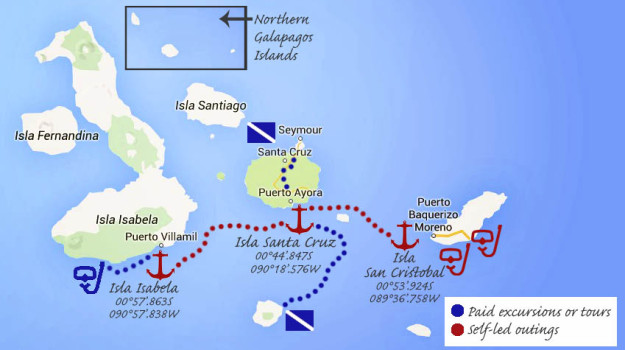 For many cruisers, the decision to go to the Galápagos is not a straightforward one. Although the Encantadas ranks as one of the fabled destinations in the world, it is also one of the more expensive. Many cruisers wrestle with whether paying big dollars will yield an experience worth the price tag. We think it does. Costs, controls, and controversy Strict procedures are mandated for cruising boats who visit the Galápagos, and plenty of controversy surrounds the regulations. There tend to be two camps among the boats we’ve met. Camp Conservation empathizes with the uphill battle the Ecuadoran government faces in preserving the islands’ unique ecosystems and is happy to jump through hoops. Camp Conspiracy assumes that the fees and hurdles are schemes to make money on the backs of yachties. We’re somewhere in the middle, but our leaning is definitely toward the former. Among the expectations are that hulls be free of barnacles, that waste be dealt with properly, and that fruits and vegetables not be imported. Stiff rules about barnacles exist, presumably because the ambitious little hitchhikers are not endemic to the islands, and the Galápagos National Park Service (GNPS) is trying desperately to prevent the introduction of new creatures. The consequences of a barnacled hull include instruction to depart the harbor, to sail 40+ nautical miles offshore, and to scrape clean the boat’s undercarriage; and possibly a fine. We appreciate the GNPS’s effort. At the same time, given that all currents flowing in proximity to the Galápagos converge on the archipelago, it seems the tenacious little buggars might be swept directly toward the islands anyway. Recyclables, organic material, and garbage are expected to be separated, which we found refreshing after living in mainland Central America, where such infrastructure is almost nonexistent. There is a fee charged for the collection and transport of waste, which we heard some mariners criticize, but that we found practical. The Galápagos are, after all, hundreds of miles from the mainland and allowing one of the most pristine archipelagos on earth to degrade into a trash dump would be a shame, to put it mildly. There are also restrictions on importation of fruits and vegetables, and given that human-driven pests (e.g., some cockroach species) and seed dispersion (e.g., red quinine tree) have threatened endemic species, it makes sense that rangers are not keen on such items being introduced. In our minds, the restrictions were generally reasonable. The shemozzle one boat endured over expired canned foods, on the other hand, was absurd! Should we not be allowed to eat an expired tin green beans in peace?! Anyway, you’ll have to decide for yourself which camp aligns with your views and ideals and, regardless of your personal opinions, whether you are willing to pay the price and comply with the rules for exploring the Encantadas aboard your own boat.#Passage to Galapagos_Landfall 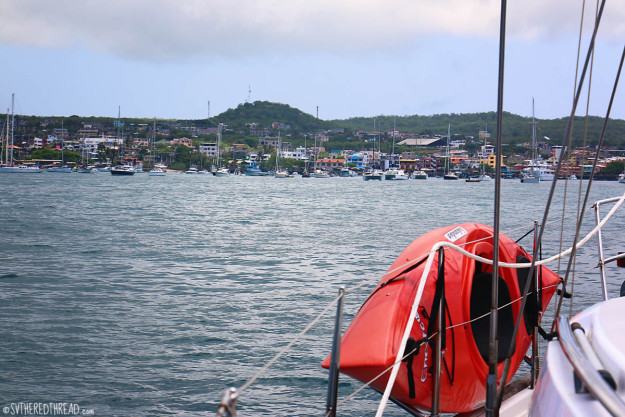 Agents and fees Working with an agent to obtain an autographo—the special documentation required for vessel entry—is more or less a requisite for visiting the Galápagos these days. We opted to work with Bolivar Pesantes (Bolivar.pesantes@hotmail.com), a well-known agent about whom we were unable to find a single scathing review (something that cannot be said for the other agents we considered). Bolivar received word of our arrival and within 90 minutes of setting our anchor, a throng of officials crowded aboard The Red Thread. As always, I managed our paperwork binder, passing around documents as requested, while the Captain of our ship, sat ready to pen his signature on a dozen forms. A thumbs-up from the woman who dove our hull confirmed that we would not be sent out to sea to scrape barnacles; our recently painted hull was in excellent shape. Hallelujah. The one order of business we had been unable to complete prior to our arrival was securing a proof-of-fumigation form. We tried to have the boat fumigated before departing Costa Rica, but our only option was to wire $200 to an attorney 100 miles away in exchange for a form indicating falsely that we’d been fumigated. That felt sleazy to us, though we later learned this is often the only option for boats departing from Panama. With advanced notice, Bolivar arranged a visit from a man who carried a rocket launcher on his shoulder and identified himself as Rambo de Fumigato. He informed us we’d need to leave the vessel for at least two hours. A bit disgusted by the thought that our home was about to be assaulted by pesticides (and simultaneously relieved as we’d found three cucarachas since recommissioning the boat…a bit embarrassing to admit that), Neil, Lori, and I climbed aboard the large panga with the officials. Rambo de Fumigato let off a smoke bomb in the cabin, before careening up the companionway like a soldier exiting a building under siege and leaping aboard with us. Fumigation: check. 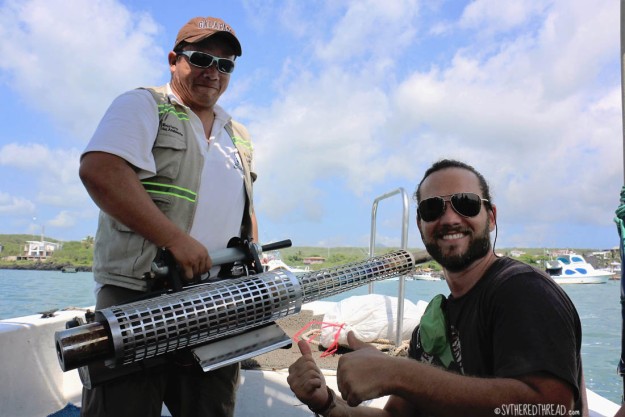 Bolivar’s fees were straightforward and consistent with those on noonsite.com. We were not expected to pay anything prior to our arrival and were only required to email color copies of our passports and USCG boat documentation to secure our autographo, which we received upon clearing into the Galápagos. Our autographo permitted us to remain in the islands for up to 60 days (we stayed for 23). We were charged a total of $1595 USD. Economically, it made a major difference for us to have a third crew member aboard who happily split the cost for an experience of a lifetime! Specific fees are outlined below: Fees paid on Isla San Cristóbal Cost in USD Reception and arrival – according to tonnage; we are 14 tons 160 Inspection and quarantine service 100 Migracíon service 40 Galápagos National Park fee – $100/crew 300 Governing council of Galápagos – $20/crew 60 Copy and transport authorities 30 Collection and transport of waste 30 Hull inspection 25 Inspection of National Park – $50/crew 150 Agency fee 500 Fumigation fee* 100 National zarpe to sail for Isla Santa Cruz** 15 $ 1,510 Fees paid on Isla Santa Cruz Cost in USD National zarpe 15 National arrival from Galápagos port*** 15 $ 30 Fees paid on Isla Isabela Cost in USD National arrival from Galápagos port**** 30 International departure zarpe 15 Use of Isabela Island municipal pier – $5/crew***** 10 $ 55 *Most boats arrive with a fumigation certificate from Panama, so this fee is atypical. **We paid Bolivar a flat $1,500 USD in a single bulk payment; he delivered our zarpe the day we departed and no additional fees were requested at that time. ***This fee was paid to Migracíon. ****We arrived on a weekend, so this fee was double; it is typically $15. *****Lori departed before we reached Isla Isabela, so we were again a crew of two. Ports and anchorages We obtained an autographo to visit the three ports where cruising boats are permitted. Our understanding is that you can choose to visit one port only, but given the uniqueness of life on each island, seeing just one would have dramatically restricted our ability to learn about the archipelago. Besides, our impression is that the expense to visit three was not much more than the cost to see just one. The three ports cruising vessels are currently allowed to visit are: Puerto Baquerizo Moreno, Isla San Cristóbal Puerto Ayora, Isla Santa Cruz Puerto Villamil, Isla Isabela One advantage in working with Bolivar is that he has agents on each island. When we dropped anchor in a new port, the agent accompanied officials to our boat. We simply had to provide them the manila envelope Bolivar had given us on Isla San Cristóbal, which contained copies of necessary documents. This expedited our check-ins and gave us one less thing to think about, which was useful as we were rather preoccupied by watching baby sharks circle our boat, sea lions attempt to make our swim step their bedroom, or giant manta rays soar above the water between islands. The Galápagos really are that special.  Excursions and tour operators More on these to come in upcoming blogs, but we enjoyed a few fantastic excursions and tours that are worth jotting down, if you are Galápagos bound. The places below are only those that we visited. Opportunities to visit other sites abound, and if time and money were no object there are several more places we would have loved to see! Isla San Cristóbal Visitor Interpretation Centre (free; walkable) La Loberia (pink shell beach; free; $2 taxi from town) La Galápaguera (giant tortoise sanctuary + breeding center; free; taxi required*) Puerto Chino (white sand beach; free; taxi required*) *Taxi across the island for half-a-day included stops at La Galapaguera and Puerto Chino ($50 split among 3 people). Isla Santa Cruz Scuba Iguana ($155/2 dives with your own gear; full-day excursions, with excellent lunch included; dove 2 days at North Seymour, Mosquera, and Floreana Islands) Charles Darwin Research Center (free; walkable) Playa Brava (immense, amazing beach; free; walkable…but not in the heat of the day) La Grieta (stunning brackish lagoon in a ravine; free; walkable) Los Gemelos (enormous collapsed craters; free; taxi required*) Rancho Primicias + lava tunnel (delightful coffee plantation where you wander among wild giant tortoises and explore ¼ -mile long underground lava tube; $5/person; taxi required*) *We hired Ramiro, who drives a white taxi truck with a sticker of a bull on it; we paid $60 for 5 hours (split 4 ways). There are dozens of white taxi trucks, but Ramiro was so knowledgeable and fun that it is worth looking for him! Speaking decent Spanish is essential though. Isla Isabela Los Tunneles with Rose Delco (snorkeling + exploring; my favorite tour; $80/person) Please note that as much as we enjoyed working with Bolivar, we did not find him helpful in organizing tours, though he generously offered to do so. When he and a comrade arrived to retrieve us for a morning scuba dive at Leon Dormido, the open-top panga was conspicuously missing a dive guide, boarding ladder, and scuba tanks. The panguero was going to allow us to dive tankless and unsupervised in hammerhead-riddled waters with swift currents and upwellings, where visibility is highly variable? Mind you that all of the above are nonsensical, if not outright prohibited. Bolivar is brilliant at managing the bureaucratic aspects of entry into and between the Galápagos Islands, but tour organization is best left to the pros. 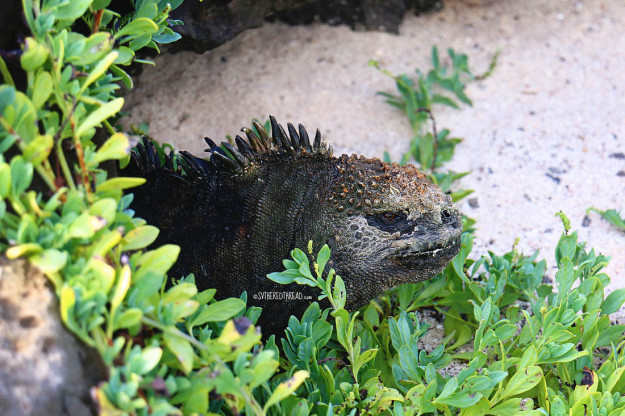 Fact vs. fiction The Galápagos are expensive: FACT This is make-your-jaw-drop true! We have not been anywhere that basic items were so pricey, which made us glad that we provisioned well before leaving the mainland. National beers cost $4 in a restaurant and $2.25 in a grocery store (basically $13.50 for a 6-pack of Ecuador’s Budweiser)! There were nice, inexpensive meals to be found along side streets off the water, however, where the plato de dia (usually a soup, entrée of fish/chicken/beef and rice, and drink) could be purchased for $4-5. Enjoy a meal at Lo y Lo in Puerto Ayora for free WIFI and extremely tasty ball-shaped things (their proper name escapes me) covered in red sauce. So tasty! You can’t go anywhere by yourself – you have to use a tour operator to see anything: FICTION While there are restrictions in some areas, there are plenty of places to see independently, as you read above. One challenge, however, is that you may need to take a taxi because the sites are spread across the islands. We never felt like we were on a leash and were happy with the opportunities for self-guided exploration. 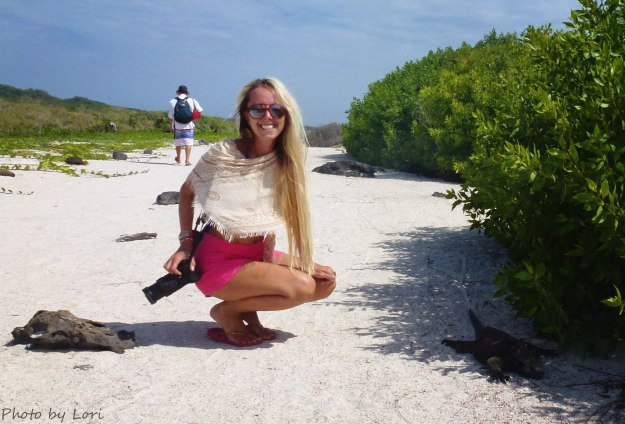 You can’t scuba dive from your boat, even if you have your own gear: FACT Camp Conservation and Camp Conspiracy could probably debate this topic for an hour or two. While it would have been interesting and far less expensive to dive off our own boat, the dive sites of greatest interest to us were on islands where we were not permitted to cruise anyway. Each dive site is allowed to be visited by a restricted number of vessels on any given day/week to avoid inundating the sites with ogling tourists. Thus, dive operators and liveaboard boats have strict schedules. In addition, the Galápagos is known for having impressive currents, which we experienced when diving with Scuba Iguana, and the risk of losing a scuba-yachtie to the equatorial counter current would probably not bode well for publicity. Costs are comparable [and pricey] across dive operators, with small discounts if you have your own BCD and regulator. The Galápagos is a tightly clustered archipelago: FICTION Well, I guess that depends on how you define “tightly clustered.” We expected to bounce between the islands like we would the San Juans. The three islands you can visit are all between 40 and 50 nautical miles apart! If you sail directly from Isla San Cristóbal to Isla Isabela, you’re looking at an overnight passage. You cannot use your own dinghy: FACT + FICTION In Puerto Baquerizo Moreno and Puerto Ayora, you are prohibited from using your own dinghy to ferry to shore and for good reason! Dinghies left tied to a dock would quickly become squats for the hundreds of sea lions who inhabit the shores of those bays. Imagine a heap of delightfully amusing, moderately territorial, growling and defecating beasts mucking up your little boat or, worse yet, sinking it with their massive blubbery bodies! Water taxis were easily hailed on VHF channel 14 or by a whistle as they passed by. Little-by-little, the fees added up, with daytime fares at $1 and $0.80 in Puerto Baquerizo Moreno and Puerto Ayora, respectively. After dark, fees jumped to $2 and $1 per person. In Isla Isabela, however, the sea lions fewer and dinghies are perfectly acceptable. Puerto Ayora is a tourist hovel and hardly worth visiting: FICTION While it is true that Puerto Ayora is the most populated and heavily touristed of Galápagos’ towns, it is an interesting and worthy stop, with many excellent excursions nearby. A distaste for visiting tourist towns should not dissuade you from visiting Isla Santa Cruz, particularly its highlands where giant tortoises roam free, and beaches, where marine iguanas are plentiful. You are required to take a mooring at Isla Isabela: FICTION Simply not true. Random tips Fuel: Fuel can be obtained on any of the islands, but we found the best price on Isla Santa Cruz. It is most complicated to obtain fuel on Isabela. Because most Ecuadorans live below or near the poverty line, fuel is subsidized for citizens and there is a higher price for tourists. It will behoove you to be aware of that price before purchasing to ensure your price is consistent with the tourist rate and no higher. Bolivar or his agents can assist in that process. Arrival date: We were eager to reach the Galápagos early in the cruising season to beat the rush of boats whose rate of arrival goes from a trickle to a fire hose in March. Unfortunately, we did not realize that our landfall was to coincide with the World Arc Rally, a fleet of 32 vessels on an 18-month circumnavigation. Nothing against mariners in that rally (in fact, we made a couple new friends!), but the presence of so many boats did overload the anchorages and spoil our hopes of being one of a handful of sailors in port. It’s worth taking a gander at such things if relative solitude interests you (“relative” because there are still loads of tourist vessels about). Internet: You can find WIFI on every island, but the cost and speed varies dramatically. At the tourist office in Santa Cruz (across from the wharf), we paid $2.50 per hour for WIFI (ouch!). On Isla Isabela, Bolivar’s agent, James Hinckle, runs the Booby Trap café with his wife, where WIFI is free and beer is very, very cold. The take-home message is that you will be able to pull down weather in preparation for your next big passage to Rapa Nui or the Marquesas! 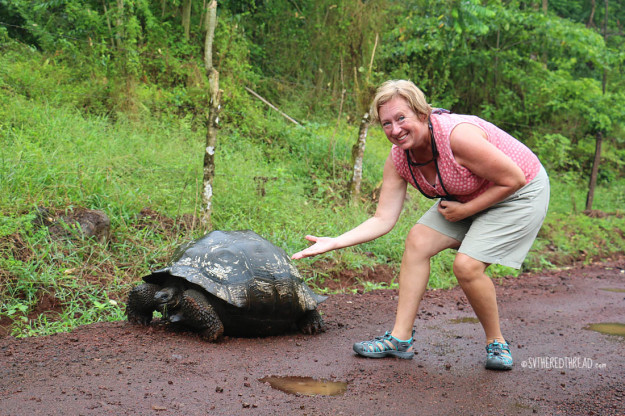 Useful books The Galapágos: A natural history (by Henry Nicholls): This is an interesting, easy-to-read and incredibly informative history on the archipelago. It discusses everything from the formation of the islands to the bizarre creatures that exist there to the role humans have played in damaging and preserving the islands. Such histories are often dull and cumbersome, but this text was a pleasure to read, if not amusing. Even the dedication is good for a chuckle, “To the memory of Lonesome George, for what he tortoise.” You must know at least a bit about the Galápagos to get that wisecrack. Ecuador cruising guide (by various cruisers): This is a free cruising guide that can be downloaded from s/v Soggy Paws. This guide is wonderful because it provides information from several cruisers, thereby giving more data points to help you decide how to spend your time in the Galápagos. The only drawback is that some entries are now quite old and information may be outdated, especially given how much policies for visiting the archipelago have changed in recent years. Wildlife of the Galápagos (by Julian Fitter, Daniel Fitter, & David Hosking): If you are interested in understanding more about the flora and fauna across the archipelago, this is a useful resource. It has lovely color photos and maps of the main islands that illustrate where some species can be observed. Its limitation is the glaring absence of fish, though marine mammals (i.e., whales, sea lions) are included. A naturalist’s guide to the Galápagos Islands (by Steve Rosenberg): This book provides a summary of each island, including describing sites for excursions. It also provides some history of the islands, though the writing is far less interesting than Henry Nicholls’ book. Conclusions Had we been unaware of the steep fees to call on the Galápagos, we would have felt very sore about price tag. But we weren’t. We expected the Galápagos to be the costliest landfall of our South Pacific voyage, and the price we were charged was consistent with the quote we’d been given. We had nothing to complain about! If we had it to do all over again, we’d hand over every single penny with toothy grins and eyes full of wonder, raring again to immerse ourselves in the magic of an archipelago that “has inspired more fundamental changes in Man’s perspective of himself and his environment” (Bowman, 1984) than anywhere else on earth. 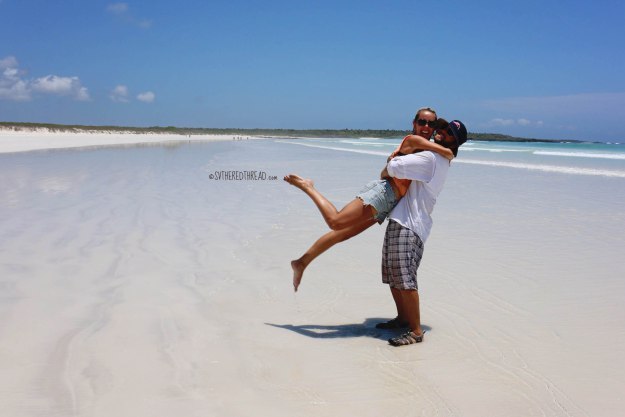 Bowman, R. (1984). Contribution to Science from the Galápagos. In R. Perry (Ed.), Key environments: Galápagos (pp. 277-311). Oxford: Pergamon Press. Source 1375
Мероприятия: Что? Где? Когда? / Семинар от СППС "Из любителя - в Высшую Лигу"« : 08.04.2019, 11:51:22 »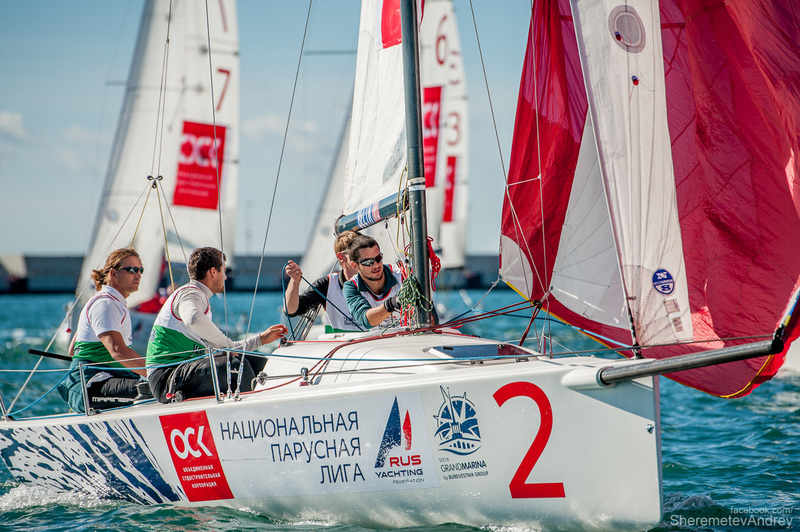 Когда: 13 апреля, 12.00. Где: кафедра парусных видов спорта НГУ им. П.Ф. Лесгафта (наб. реки Мойки, 108). Семинар проведет Валерия Коваленко, капитан команды ArtTube RUS1 в классе J/70. Валерия – феномен российского парусного спорта, юрист, арт-деятель. Она пришла в яхтинг всего четыре года назад и за это время превратилась в одну из сильнейших в мире рулевых в своем классе. В 2017 и в 2018 годах ее команда побеждала в крупнейшей международной серии Winter series J/70 в Монако. Среди других достижений: золото на чемпионате России в классе J/70 (2018), серебро общего зачета Национальной парусной Лиги (2018), победа в Зимней серии радио «Монте-Карло» в Сочи (2017 и 2018). Валерия дважды была номинирована на национальную премию «Яхтсмен года» в номинации «Яхтсменка года». На семинаре Валерия Коваленко расскажет о том, как новичку собрать команду и вырасти до уровня профессионала: От учебы до первых побед: сколько нужно времени, чтобы достичь результатов Страхи: обоснованные и не очень Почему на самом деле рулить несложно Особенности тренировочного процесса: стратегия и интенсивность В каких регатах лучше принимать участие новичку Большой спорт и гонки для удовольствия: в чем разница и как грамотно распределить свое время. Также вы узнаете об особенностях участия в регатах класса J/70 в России и на международной арене, об организационных моментах - от выбора подходящей регаты до тонкостей страхования. Стоимость: 1000 рублей. Для членов Санкт-Петербургского парусного союза, оплативших взнос за 2019 год, участие БЕСПЛАТНОЕ. Вы можете оплатить взнос (как и вступить в СППС) на самом семинаре. Количество мест ограничено, регистрация ОБЯЗАТЕЛЬНА! Зарегистрироваться можно здесь Пресс-служба СППС 1376
Регаты и Матч-рейсы / «Богатыри» - третьи« : 08.04.2019, 11:36:33 »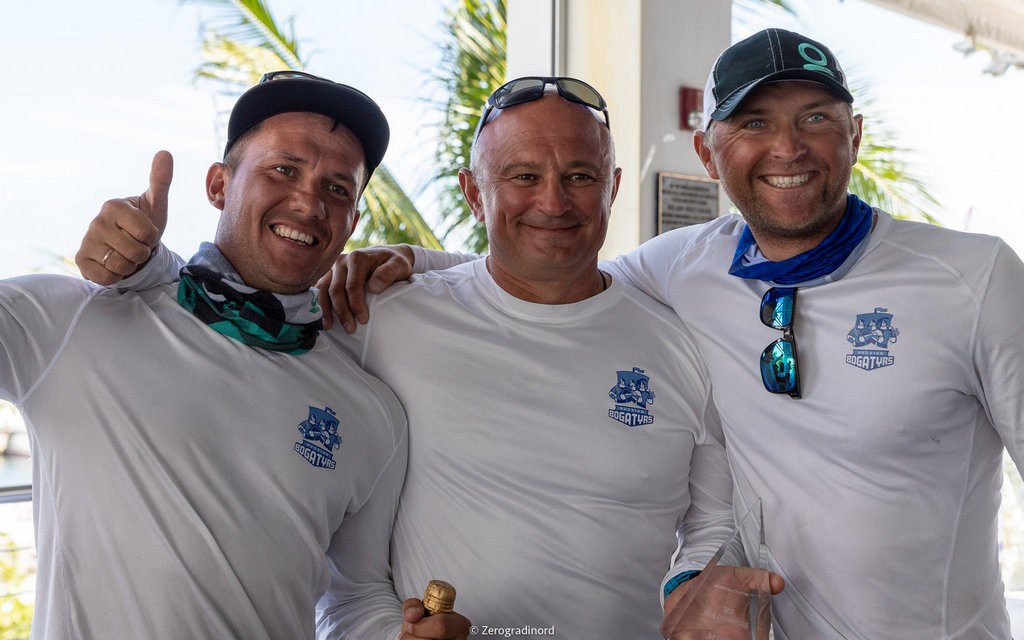 В Майами завершился чемпионат мира в классе яхт Melges 20. «Русские богатыри» Игоря Рытова (Константин Беспутин, Антон Сергеев) завоевали бронзу В десяти гонках (при одном выбросе) Russian Bogatyrs набрали 44 очка, приходы 3 – 4 – 6 – 3 – 4 – 11 – (19) – 1 – 3 – 9. Чемпионом мира стала итальянская команда STIG (шкипер – Алессандро Ромбелли) – 34 очка, второе место заняла американская Hartbreaker Роберта Хьюза – 41. Еще одна лодка под российским флагом – «Ника» Владимира Просихина – на пятой позиции: 58 очков, приходы 4 – 17 – 10 – 1 – 8 – 2 – 5 – 9 – (20) – 2. Полные результаты ЧМ Источник 1377
Регаты и Матч-рейсы / Отстали всего на очко!« : 08.04.2019, 11:32:43 » Экипажу RUS1 Валерии Коваленко не удалось удержать лидерство на первом этапе Кубка Италии в классе J70 в Скарлино (на Тирренском побережье) По итогам регаты команда Коваленко - лишь 9-я (35 очков после 5-ти гонок). В воскресенье RUS1 выступила неудачно – приходы 35 – 15. При этом на пьедестал поднялась другая российская команда - RUS1405 Андрея Малыгина, которая стала второй. Отметим, что от победителей - ITA949 во главе с Карло Альберини (20 очков) – наш экипаж отстал всего на очко. Полные результаты Источник 1378
Регаты и Матч-рейсы / Сенсация от Габара!« : 07.04.2019, 21:54:58 »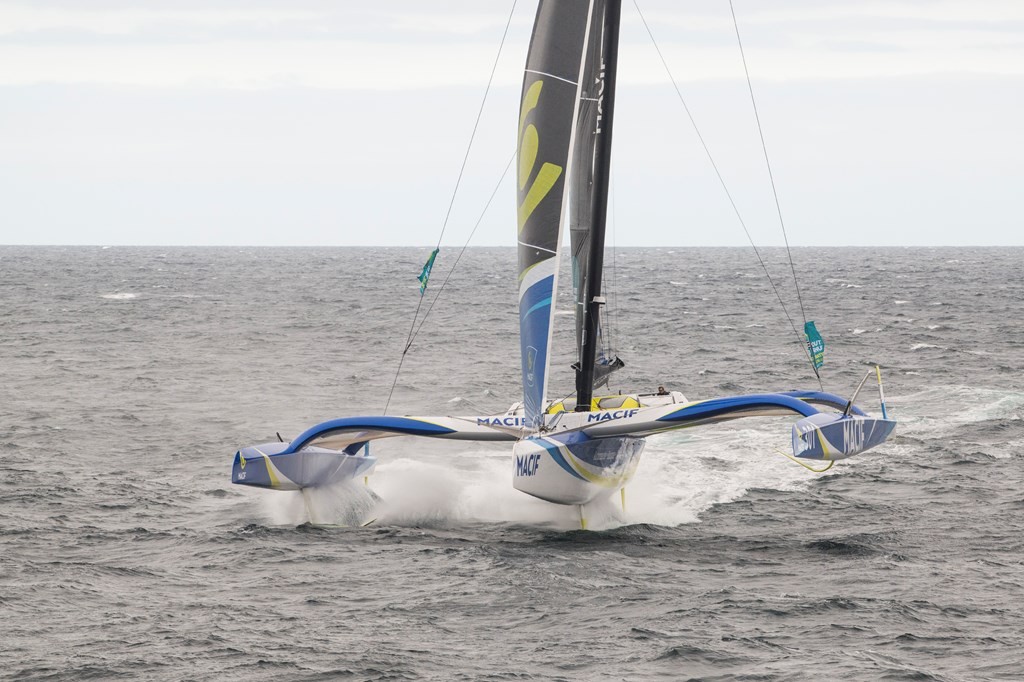 Как сообщил знаменитый французский шкипер Франсуа Габар в интервью итальянскому сайту www.pressmare.it, 3 ноября стартует гонка Brest Atlantiques, в которой примут участие самые известные макси-тримараны класса Ultime. Габара, уверены, представлять парусным людям не нужно: напомним лишь, что в 2013 году он выиграл кругосветную регату Vendée Globe, а в 2017-м установил рекорд одиночного кругосветного плавания на тримаране Macif. И вот вчера в интервью www.pressmare.it месье Франсуа сообщил поистине сенсационную новость. Осенью нынешнего года из французского Бреста стартует гонка Brest Atlantiques. Участие в ней примут знаменитые макси-тримараны класса Ultime (длина – 32 метра, ширина – 23), а продлится она чуть более месяца. Тут необходим небольшой экскурс в историю. Как некоторые, возможно, помнят, в свое время было объявлено, что 29 декабря 2019 года начнется небывалая гонка макси-тримаранов вокруг света – Brest Oceans. Но минувшей зимой – сразу после того как в трансатлантической Route du Rhum несколько тримаранов получили серьезные повреждения, а Banque populaire IX и вовсе разрушился, - было принято решение проведение Brest Oceans отложить. На неопределенный срок. А теперь выясняется, что вместо Brest Oceans в конце этого года состоится Brest Atlantiques! Маршрут гонки такой. Из французского Бреста – на юго-запад к Рио-де-Жанейро. При подходе к Рио – резкая смена курса в направлении к мысу Доброй надежды. После чего, без захода в Кейптаун, - вновь смена курса, на север. Финиш в Бресте спустя месяц с небольшим. На каждом тримаране – двое, то есть гонка будет double-handed. Кто будет ко-шкипером у Габара, пока остается тайной. При этом месье Франсуа уже не терпится принять старт: по его словам, гонка будет захватывающая, а ее дистанция лишь немного уступает кругосветной. «В Route du Rhum всем нам пришлось столкнуться с трудностями, - заявил Габар. – Но именно трудности закаляют людей, и теперь все мы стали сильнее. Я счастлив, что уже в этом году нас ждет Brest Atlantiques. Ну а Brest Oceans пока подождет. Хотя недалек тот день, когда и она станет реальностью!» Источник 1379
Машинный телеграф / Совсем не до шуток: лодка Федора Конюхова 1 апреля перевернулась в Южном Океане« : 02.04.2019, 22:59:18 »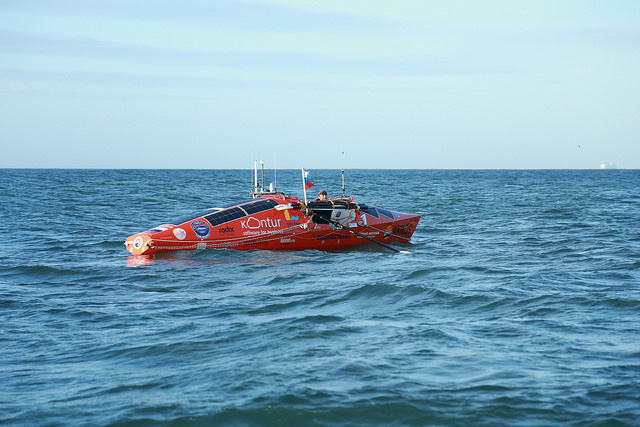 Весельная девятиметровая лодка «АКРОС», на которой Федор Конюхов в одиночку с декабря идет из Новой Зеландии к мысу Горн в рамках кругосветного путешествия, во время очередного шторма день перехода трижды за час перевернулась на 360 градусов. За предыдущие 116 дней лодка не переворачивалась ни разу. ВСЕ ТРИ РАЗА ЛОДКА УСПЕШНО ВОЗВРАЩАЛАСЬ НА КИЛЬ, САМ КОНЮХОВ, НАХОДИВШИЙСЯ В ЗАДРАЕННОЙ НОСОВОЙ КАЮТЕ, НЕ ПОСТРАДАЛ И ПОДДЕРЖИВАЕТ СВЯЗЬ С ЗЕМЛЕЙ. Однако из-за погодных условий пока не удается узнать, какие повреждения получила «АКРОС» после таких вращений. «Первый удар был самым сильным, лодка затрещала. <…> Сейчас сложно оценить все повреждения и потери на лодке "АКРОС", точно известно, что сорвало часть солнечных панелей (Федор слышит их хлопанье), сорвало новый ветроуказатель — поставил сутки назад. <…> Неизвестно что творится в носовом отсеке, есть ли повреждения и поступает ли вода. Носовой люк открыть невозможно, волнение в океане 5 метров, палубу заливает», — сообщает экспедиционный штаб российского путешественника. По словам представителей штаба, изначально шторм не вызывал у команды сильного беспокойства: хотя прогнозировался ветер в 40 узлов, до сих пор лодка успешно выдерживала такие условия. К тому же шторм зародился совсем рядом с тем местом, где находился Конюхов, и не мог успеть набрать полную мощь. Беда пришла вместе с гигантскими волнами, которые, вероятно, начали свой разгон еще в Атлантике и, обойдя вокруг света, выросли до опасных размеров. «Во время вечернего сеанса связи (22:00 по Москве) Фёдор сообщил, что размеры волн приняли угрожающие значения, волны идут стеной, лодку поднимает на большую высоту, потом она летит вниз с волны и останавливается в ложбине. Пенистые гребни высотой в несколько метров, лодка просто утопает в них», — рассказывают в экспедиционном штабе. После третьего переворота лодка Конюхова некоторое время не могла вернуться на киль и лежала на воде слегка притопленная на правый борт. Помогли те же волны, которые и стали причиной ЧП — после очередного удара «АКРОС» получила дополнительное ускорение и вернулась в нормальное положение. Оба спутниковых телефона на борту функционируют нормально, навигационный буй Iridium продолжает автоматически раз в два часа передавать координаты путешественника. После ревизии, которую Конюхов провел 31 марта, на борту оставалось продуктов на 50 дней. Тогда же до мыса Горн ему оставалось 1 111 морских миль. Он надеялся завершить переход накануне Пасхи, которая в этом году приходится на 28 апреля. Анастасия Носова 1380
Мероприятия: Что? Где? Когда? / Персональная выставка картин Федора Конюхова« : 02.04.2019, 22:51:21 »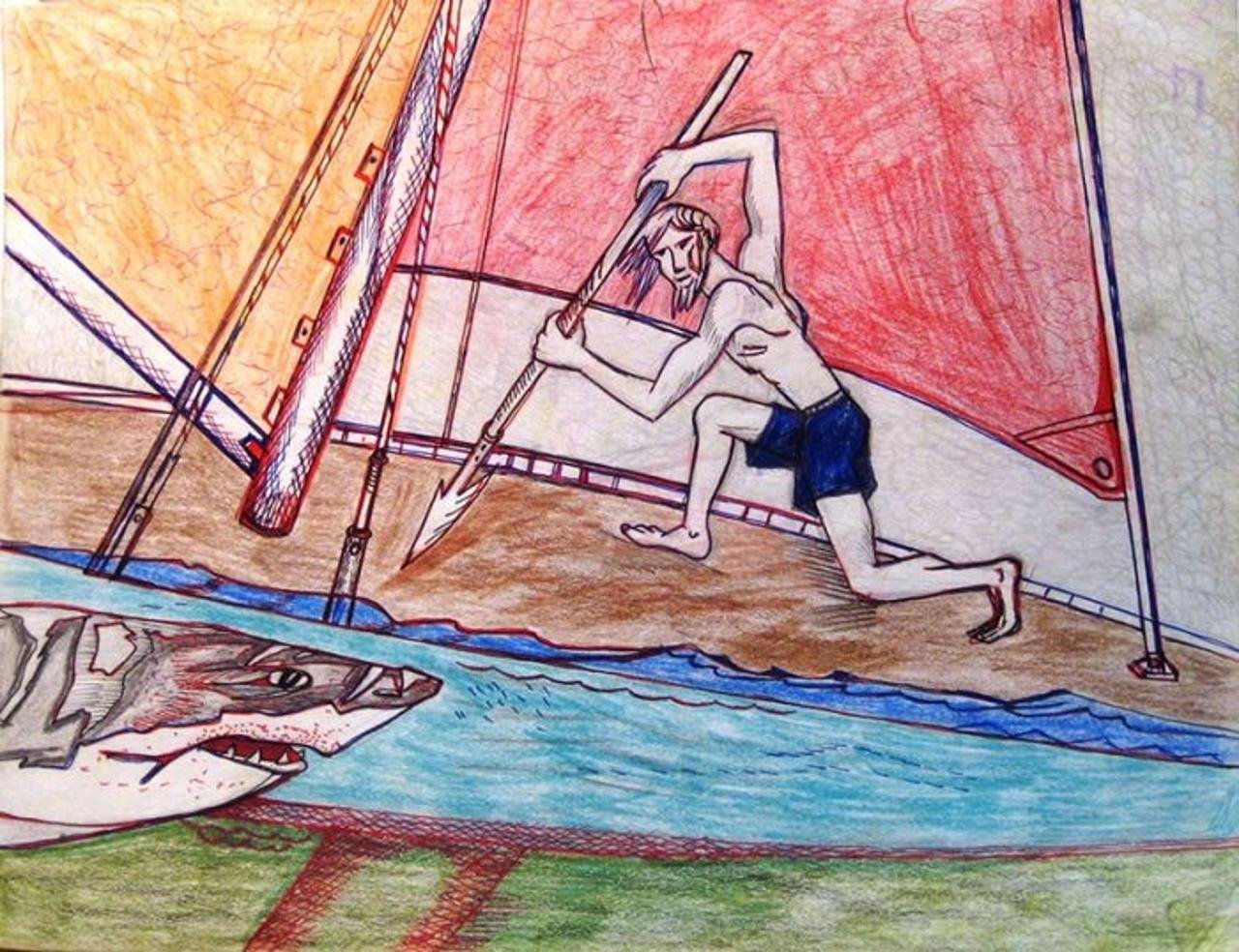 В Санкт-Петербурге в Русском музее открылась персональная выставка Федора Конюхова, на которой представлены живописные и графические работы путешественника. В экспозиции представлены около 50 произведений путешественника, а также созданный музеем документальный фильм о творчестве Конюхова как художника. Во время церемонии открытия Федор Конюхов, который сейчас идет на весельной лодке к мысу Горн, вышел на связь с гостями по спутниковому телефону. "Я очень рад, что у меня открывается выставка в Русском музее. Когда я еще учился, когда еще Ленинград был, я ходил в Русский музей, но никогда не представлял, что мои работы будут здесь показывать. Для меня это большая честь как для художника", - сказал Конюхов. 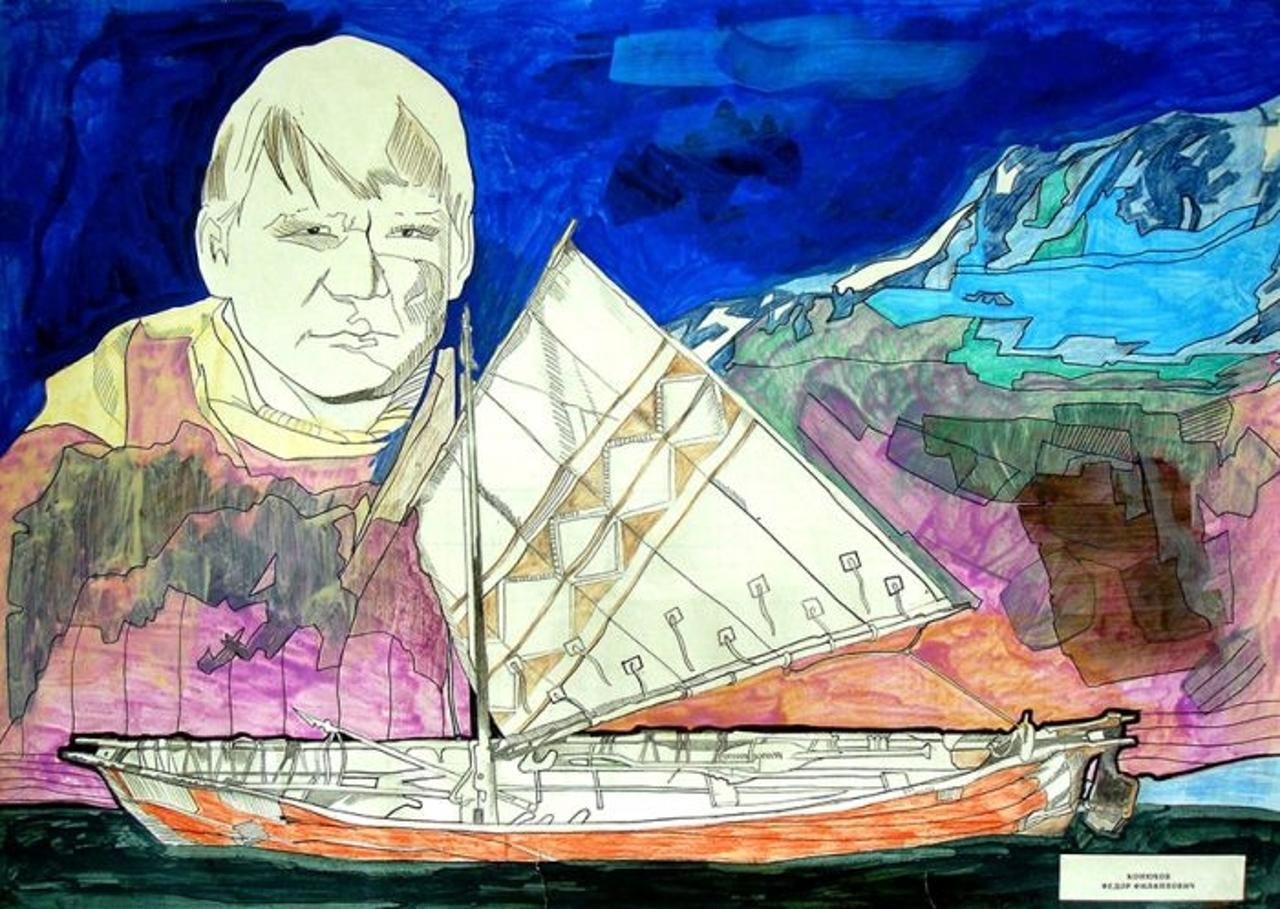 Федор Конюхов является выпускником Бобруйского художественного училища по специальности "резчик- инкрустатор", с 1983 года - член Союза художников СССР, а также член Московского союза художников и скульпторов, почетный академик Российской Академии художеств (РАХ), награжденный Золотой медалью РАХ. В общей сложности Конюхов создал более 3 тыс. произведений и неоднократно участвовал в российских и международных выставках. Выставка будет доступна для посещения в Михайловском замке по 10 июня. Конюхов продолжает одиночное кругосветное плавание на весельной лодке "Акрос". Он стартовал 6 декабря из порта Данидин в Новой Зеландии. Маршрут путешественника разбит на три этапа: Данидин (Новая Зеландия) - мыс Горн (Чили), мыс Горн - мыс Люин (Австралия) и мыс Люин - порт Данидин. В общей сложности Конюхову предстоит пройти на веслах 27 тыс. километров. Источник
|

Нет пользователей онлайн.
Здесь может быть Ваша реклама!
|